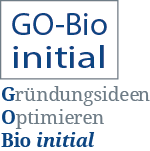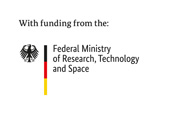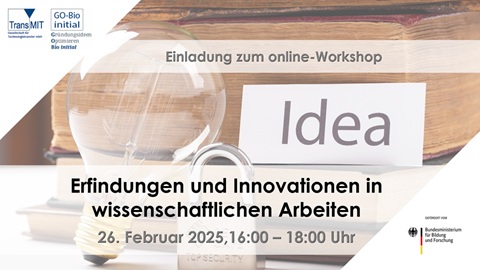Scientific work and research results often contain patent-relevant inventions. The workshop provided information on both the step “from idea to patent” and the path “from patent to product”.
After presenting TransMIT and the GO-Bio initial funding program, Dr. Widmann first discussed the importance of patenting. Ideas, innovations, know-how and inventions are intangible goods and are therefore not initially protected. In addition, scientific results become state of the art upon publication and can be freely used by anyone.
As these usually arise in the course of an employment relationship at a university, inventions and innovations in the context of scientific work must be reported to the university in accordance with the German Employee Inventions Act (ArbErfG). The ArbErfG creates a balance between the interests of the employer, who is entitled to the result of the work, and the employee (inventor), who owns the invention. The university can then release or claim the invention within 4 months.
For protection under patent law, the invention must be new, involve an inventive step, be industrially applicable and not belong to one of the areas excluded from patentability. A patent search can initially be used to determine the state of the art. The search also provides an insight into existing property rights, economic data, trends and, where applicable, alternative solutions. Free patent databases at national, European and international level are available for this purpose.
The results of the research are analyzed and, if necessary, alternatives are presented. Patentability, marketing opportunities and the cost-benefit ratio are then assessed on the basis of the results of the analysis.
In addition to the patent, there are other types of property rights, which were presented by Dr. Widmann.
Once an IP strategy has been drawn up and a draft drafted, the process is handed over to a patent attorney, who agrees the draft once again with the inventor and the management.
In Germany, the invention is submitted to the Patent Office (DPMA). This is followed by a search request and the search report is published after 18 months. If the invention is patentable, the examination request, the examination procedure and finally the patent grant follow. Dr. Widmann also pointed out possibilities for extending the national application.
Once a patent has been granted, there is a twenty-year, regionally limited right to use and prohibit the invention, whether for own use or through sale or out-licensing for third-party use.
Finally, Dr. Widmann described important steps for marketing property rights.


